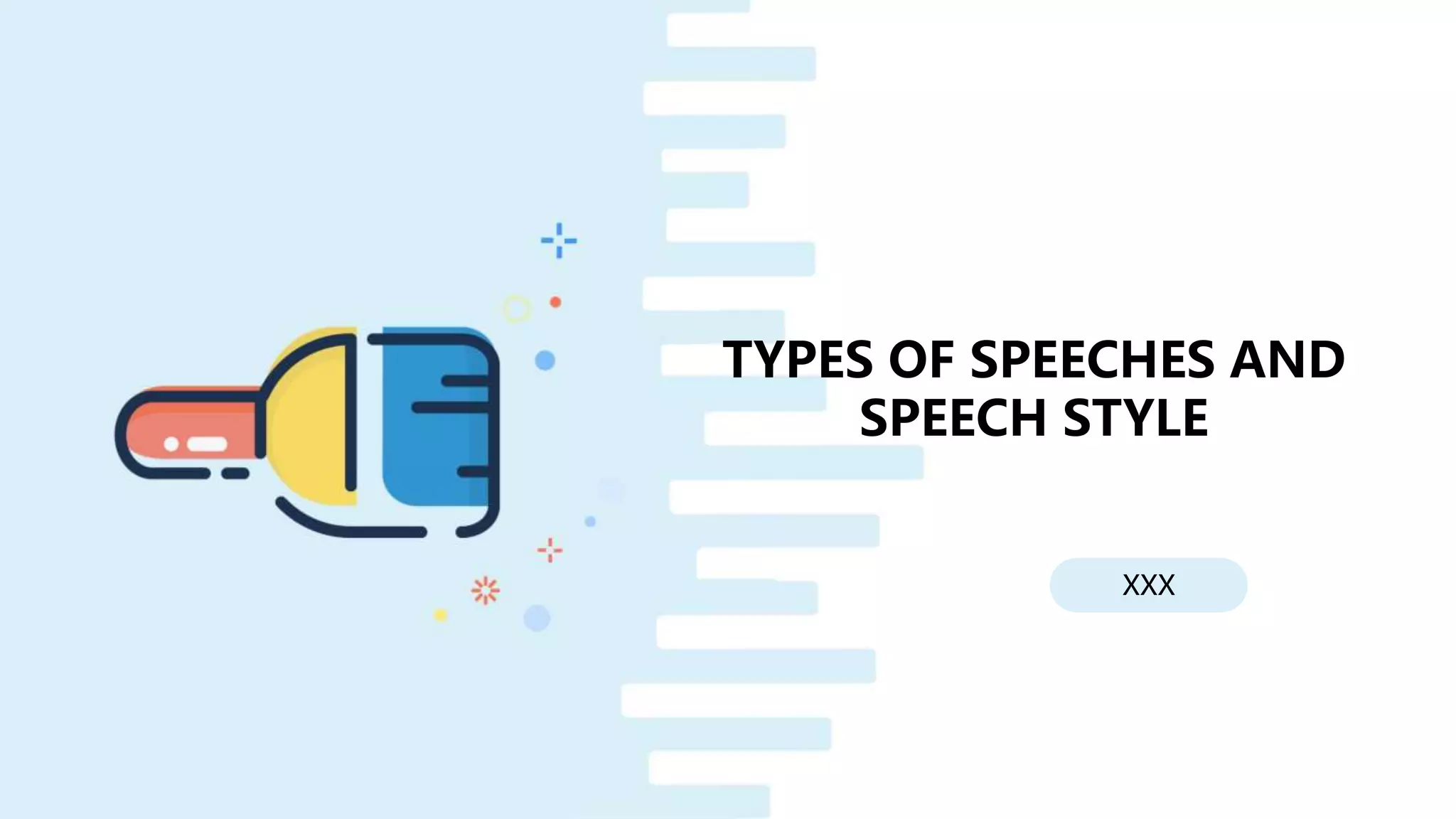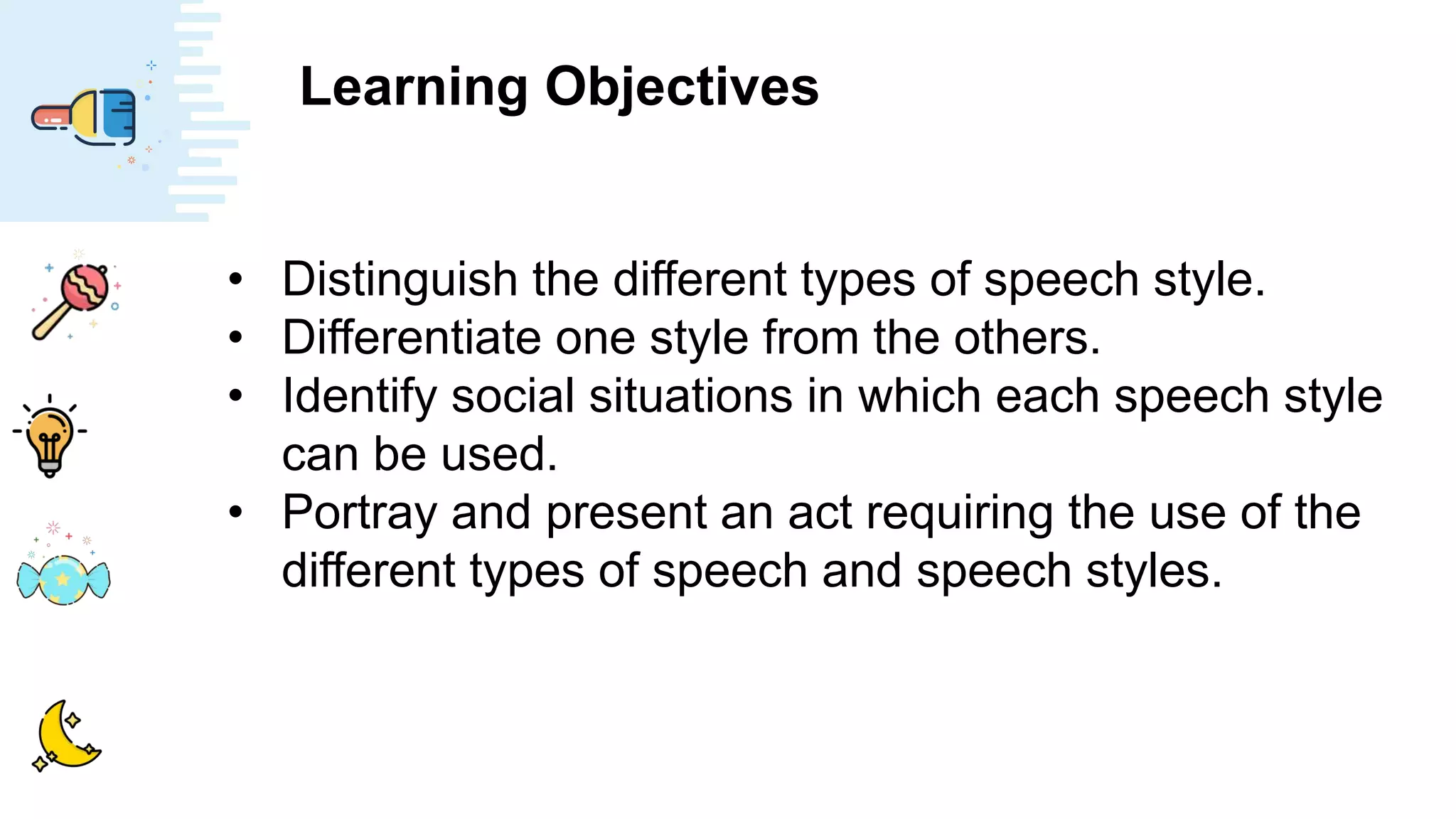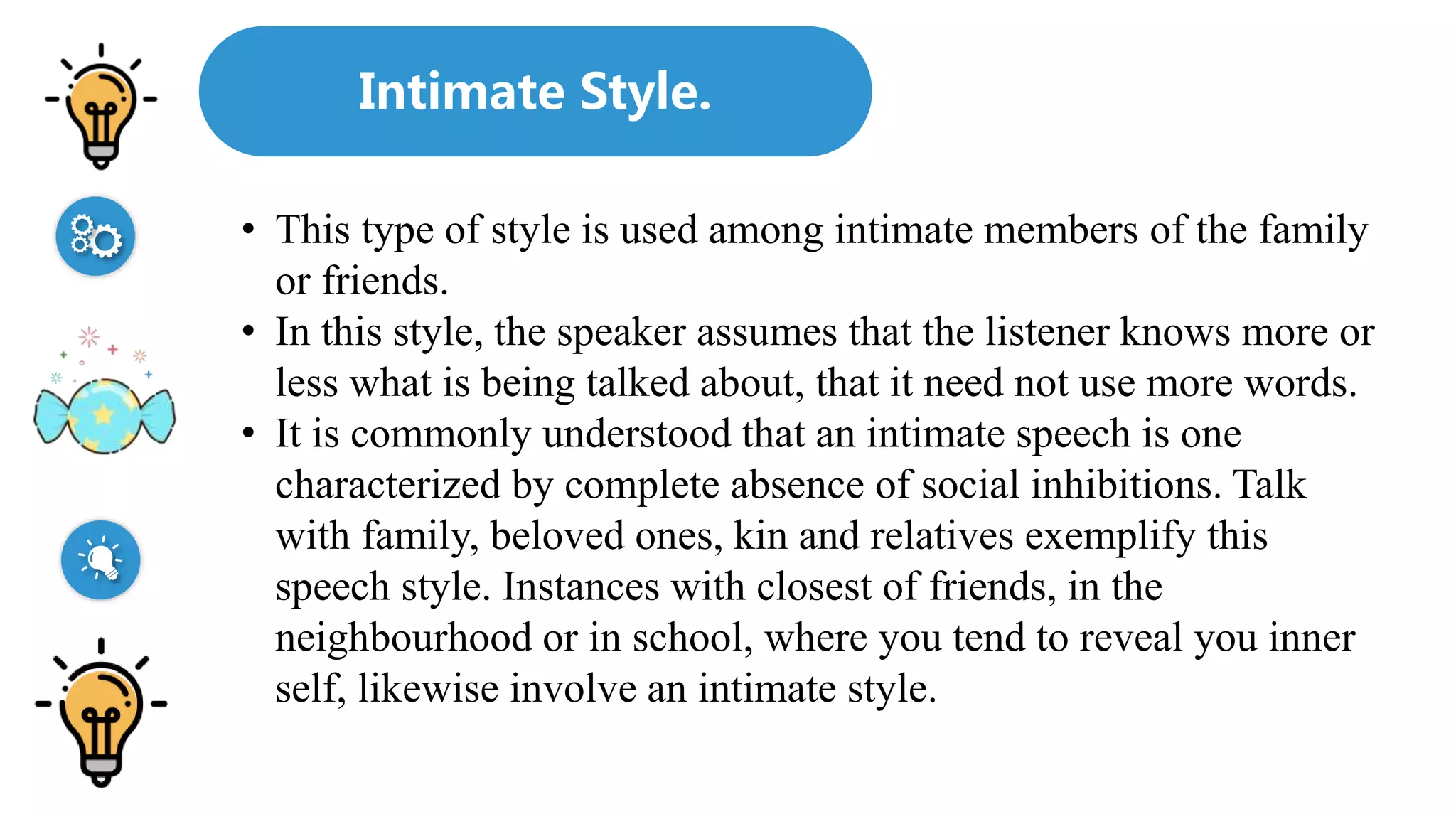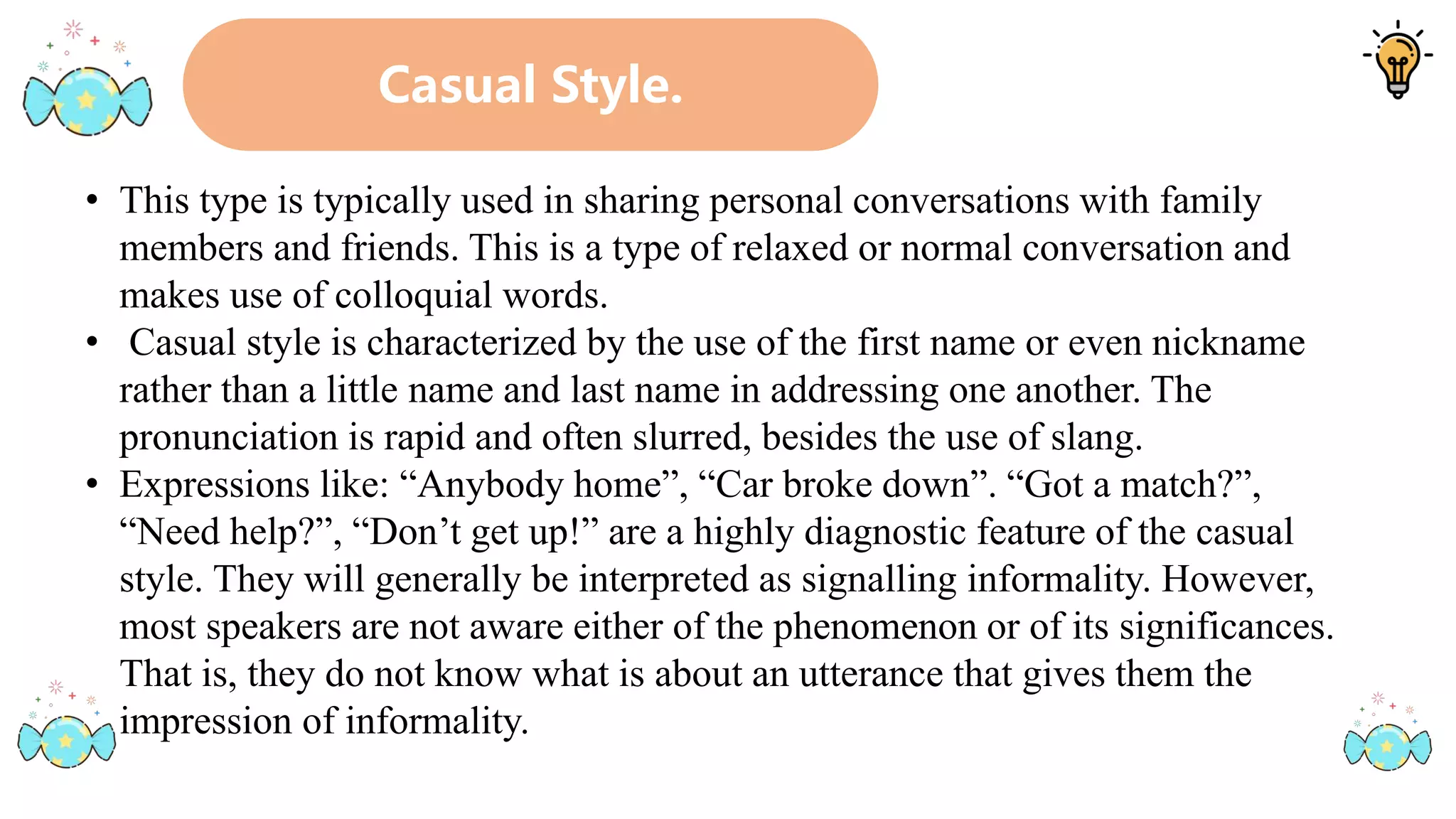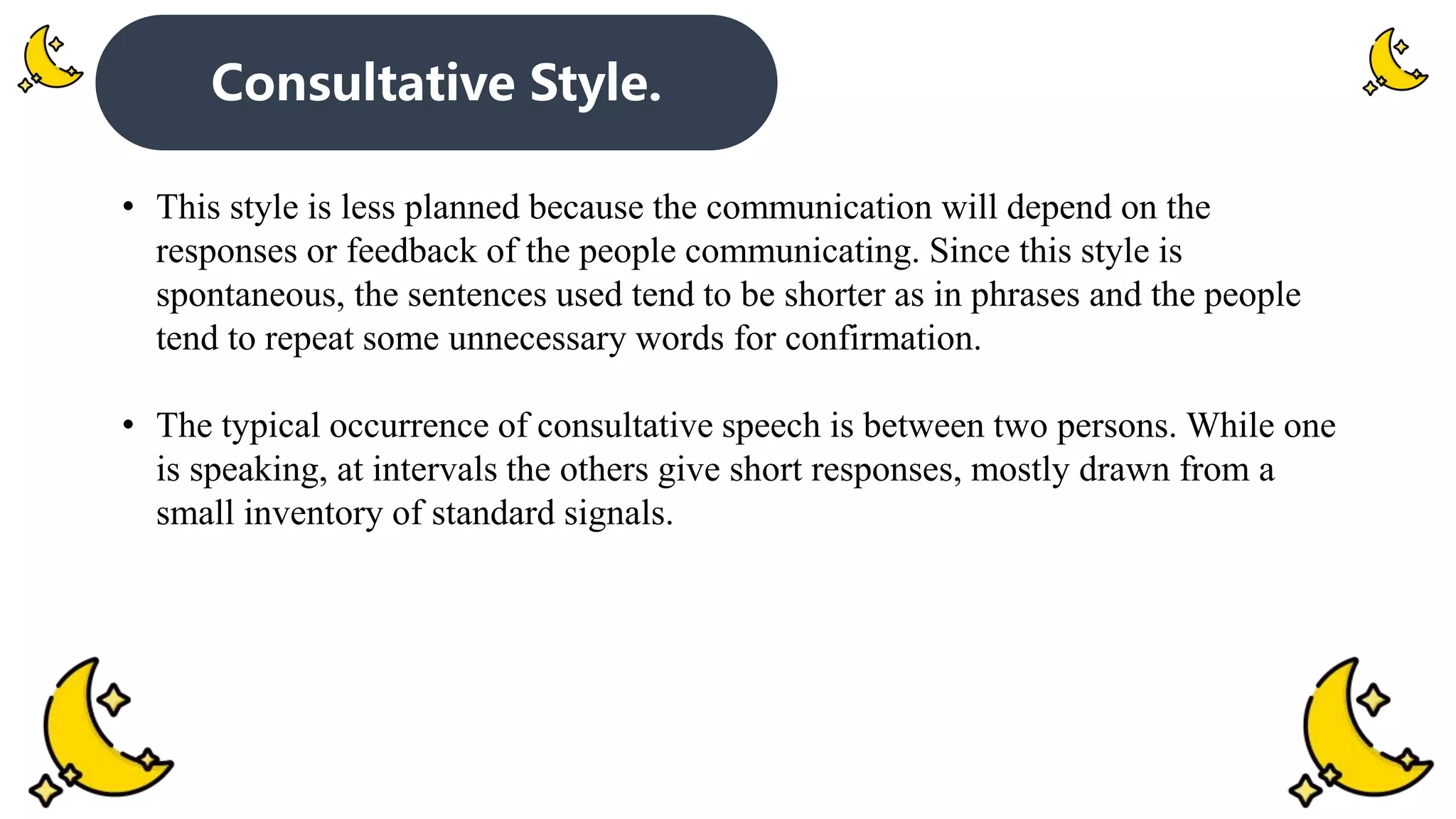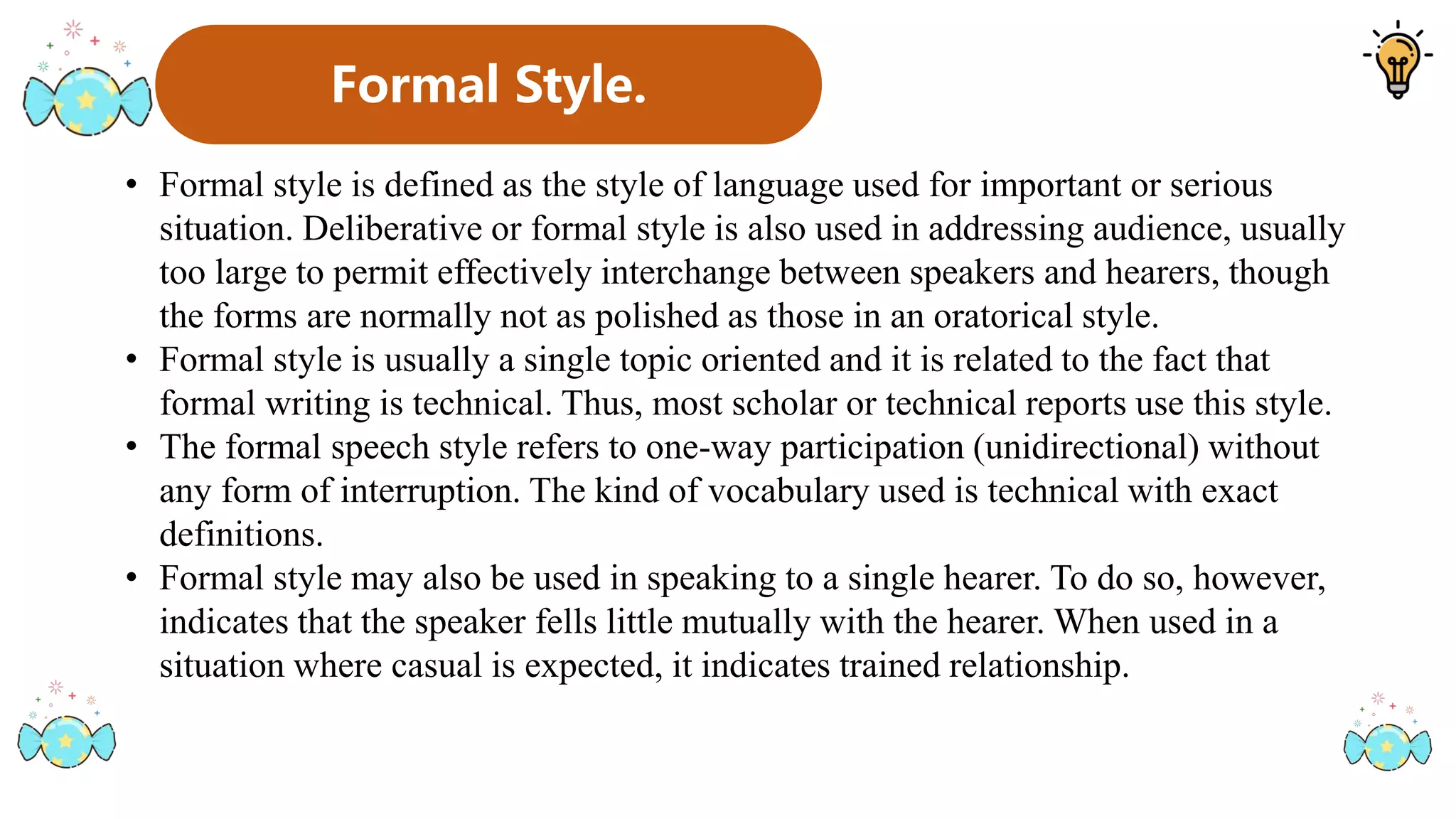The document discusses five different styles of speech: intimate, casual, consultative, formal, and frozen. The intimate style is used among close friends and family and assumes shared understanding. The casual style is for relaxed conversations and uses colloquial words and nicknames. The consultative style is spontaneous and uses short phrases and repetition for confirmation in conversations. The formal style uses carefully chosen technical vocabulary and is appropriate for presentations to large audiences. The frozen style, the most formal, uses precisely worded phrases, sentences, and structures that are fixed, like in laws, ceremonies, and national documents.
